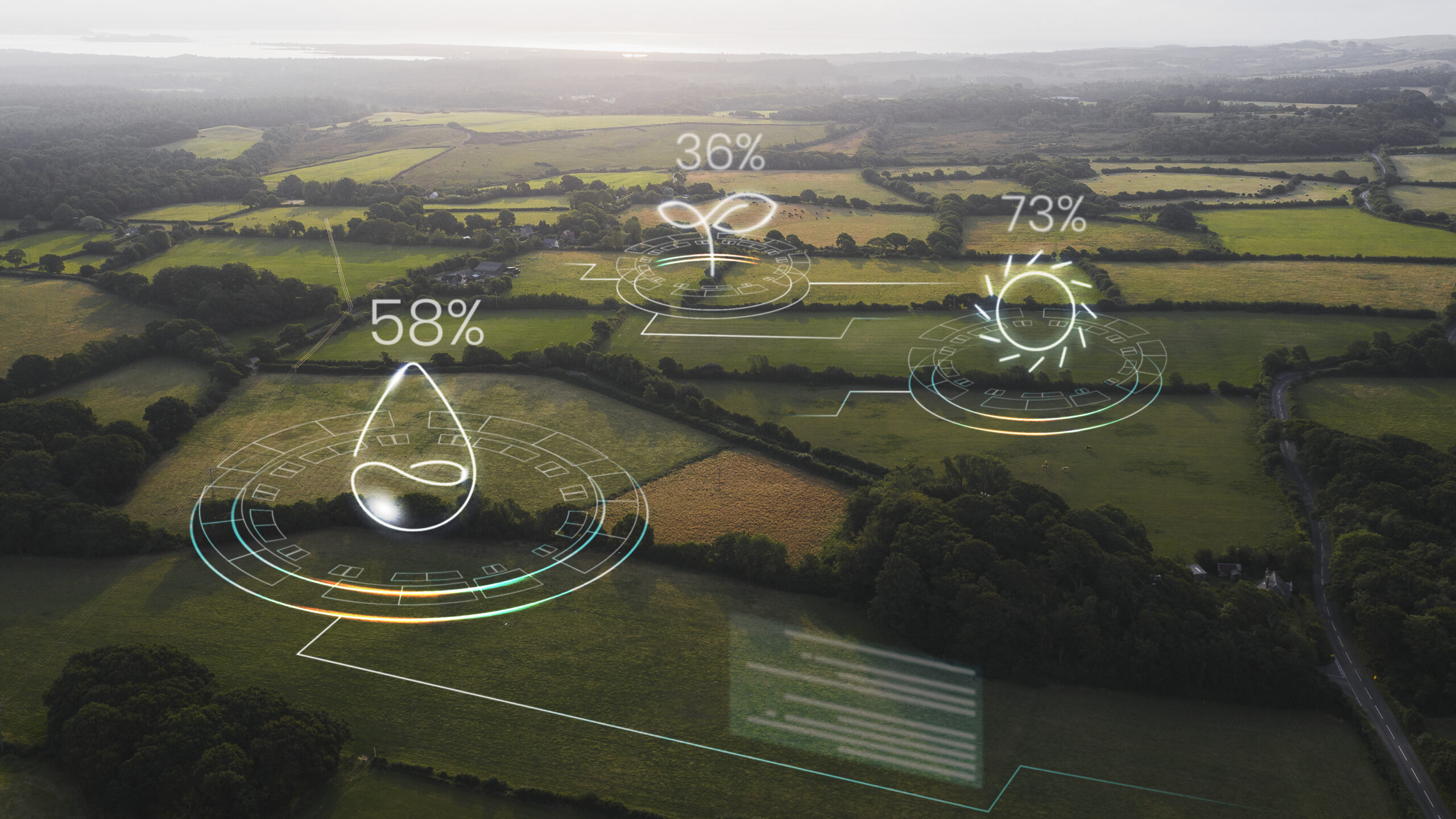Introduction: Climate change is one of the most pressing challenges of our time, and scientists, researchers, and policymakers are increasingly relying on data-driven insights to understand and address its effects. Environmental sensors have become pivotal tools in climate change research, providing valuable real-time data that helps scientists monitor environmental conditions, track trends, and predict future changes. By integrating advanced sensor technologies, researchers are able to collect accurate data from diverse ecosystems, offering new perspectives on how climate change impacts the planet.
In this article, we will explore how environmental sensors are transforming climate change research, their key applications, and the benefits they offer in building a sustainable future.
What Are Environmental Sensors?
Environmental sensors are devices that measure and record various environmental parameters, such as temperature, humidity, air quality, CO2 levels, soil moisture, and more. These sensors can be deployed in various ecosystems, from urban cities to remote forests and oceans, providing data that supports climate change research, environmental monitoring, and natural resource management.
Some of the key types of environmental sensors include:
- Air Quality Sensors: Measure pollutants like carbon dioxide (CO2), nitrogen dioxide (NO2), sulfur dioxide (SO2), particulate matter (PM), and ozone.
- Temperature Sensors: Monitor air, water, and soil temperatures to track changes in climate.
- Humidity Sensors: Measure moisture levels in the air and soil, crucial for studying drought and precipitation patterns.
- Soil Sensors: Measure soil moisture, temperature, and other factors to study changes in ecosystems and agriculture due to climate shifts.
- Water Quality Sensors: Track pH, salinity, turbidity, and temperature in bodies of water to detect the impact of climate change on marine life.
The Role of Environmental Sensors in Climate Change Research
- Monitoring Greenhouse Gas Emissions: Environmental sensors play a critical role in monitoring greenhouse gas emissions, which are central to climate change. Sensors can detect the concentration of gases like carbon dioxide and methane in the atmosphere, helping researchers assess how these emissions are changing over time and their impact on global warming. By deploying sensors in different regions, researchers can build a comprehensive picture of greenhouse gas sources and trends.
- Tracking Global Temperature Changes: Temperature sensors are essential for studying climate change and understanding its effects on the planet. By measuring temperature fluctuations in the air, oceans, and on land, researchers can track long-term trends in global warming. The data from these sensors allow scientists to monitor how various ecosystems, including polar ice caps, forests, and oceans, are being affected by rising temperatures.
- Studying Deforestation and Land Use Changes: Environmental sensors also play a vital role in monitoring deforestation, land degradation, and other changes in land use. For example, soil moisture and temperature sensors can track how changes in land use affect soil health, while satellite-based sensors can capture land cover changes. Understanding the drivers of land use change is crucial for mitigating climate change, as forests and wetlands act as carbon sinks.
- Predicting Weather Patterns and Extreme Events: Environmental sensors help researchers study how climate change is influencing weather patterns, such as temperature extremes, storms, and droughts. By deploying sensors in key locations, scientists can track shifts in weather behavior, offering early warnings for extreme events such as hurricanes, floods, or heatwaves. This data helps communities prepare and adapt to the changing climate.
- Monitoring Ecosystem Health: Environmental sensors are increasingly used to monitor the health of ecosystems, from forests and wetlands to coral reefs and oceans. These ecosystems are vital for regulating the Earth’s climate, and sensors help track their health over time. For example, sensors that measure soil moisture can indicate changes in vegetation, while ocean sensors track the effects of warming temperatures on marine biodiversity.
Key Benefits of Environmental Sensors in Climate Change Research
- Accurate, Real-Time Data: Environmental sensors provide continuous, real-time data that is critical for understanding the dynamics of climate change. This data is vital for identifying emerging trends and making informed decisions.
- Improved Forecasting: With the use of sensors, researchers can improve climate models and predictions. By incorporating data from environmental sensors, scientists can develop more accurate forecasts for climate scenarios and predict the impacts of climate change on different regions.
- Early Warning Systems: Sensors enable early detection of environmental changes, allowing for faster response times in cases of extreme weather events, pollution spikes, or ecosystem health threats. This data can help governments and organizations implement timely measures to mitigate damage.
- Cost-Effective Monitoring: Environmental sensors can provide long-term, cost-effective solutions for monitoring large areas or remote locations. Sensors can collect data over extended periods without the need for manual intervention, making them an efficient tool for climate change research.
- Global Coverage: The widespread use of environmental sensors provides a global network of data points, enabling researchers to monitor climate change on a global scale. This helps identify regional trends and localized impacts of climate change that may not be apparent in centralized research.
Applications of Environmental Sensors in Climate Change Research
- Wildlife Conservation: Environmental sensors are used to monitor habitats and species affected by climate change. Temperature and humidity sensors, for instance, help researchers track changes in the environments of vulnerable species, such as amphibians or polar bears. By understanding how climate change affects biodiversity, conservation efforts can be better informed and targeted.
- Agriculture and Food Security: Environmental sensors are being used in agriculture to monitor soil conditions and crop health, which are heavily impacted by changing climate conditions. Soil moisture sensors can help farmers optimize irrigation practices, and temperature sensors can be used to predict frost events or crop diseases. By integrating these sensors, farmers can adapt to changing weather patterns, ensuring food security in a warming world.
- Ocean and Marine Research: Oceanic sensors are crucial for studying the effects of climate change on marine ecosystems, including rising sea levels, coral bleaching, and acidification. Environmental sensors in oceans provide real-time data on ocean temperature, pH levels, salinity, and more, helping scientists understand the impacts of climate change on marine life and ecosystems.
- Urban Climate Monitoring: In cities, environmental sensors help monitor pollution levels, air quality, and heat islands. These sensors can track emissions from traffic and industrial activities and identify trends in urban climate change. This data is crucial for policymakers to take steps in improving air quality and adapting cities to climate-related challenges.
Challenges in Using Environmental Sensors for Climate Change Research
While environmental sensors offer great promise in climate change research, several challenges remain:
- Sensor Accuracy and Calibration: Environmental sensors must be regularly calibrated to ensure accurate readings. Sensor drift, malfunctions, and calibration errors can result in unreliable data, which may hinder climate research.
- Data Integration: Collecting data from multiple sensors across different regions and ecosystems can lead to issues with data integration. Researchers need robust systems to manage and analyze vast amounts of data from diverse sources.
- Cost of Deployment: Deploying environmental sensors in remote locations, especially in oceans or polar regions, can be expensive. The cost of equipment, installation, and maintenance can limit the widespread use of these sensors.
- Data Privacy and Security: As environmental sensors collect large amounts of data, ensuring the privacy and security of this data is essential. Proper handling and protection of data are crucial to maintain the integrity of climate change research.
The Future of Environmental Sensors in Climate Change Research
The future of environmental sensors is bright, with advancements in sensor technology, communication networks, and data analysis. The rise of 5G technology will enable faster data transmission from remote sensors, making it easier to collect and share data in real time. Additionally, machine learning and artificial intelligence will allow researchers to analyze sensor data more efficiently, uncovering patterns and trends that would be difficult to detect otherwise.
As the demand for climate data continues to grow, environmental sensors will play an increasingly important role in shaping climate change policies and decision-making. By providing accurate, real-time data, sensors will help drive the global effort to mitigate and adapt to climate change, ultimately creating a more sustainable future.
Conclusion:
Environmental sensors are essential tools in climate change research, offering accurate, real-time data that enables scientists to understand, monitor, and address the impacts of climate change. From tracking greenhouse gas emissions to studying ecosystem health and predicting extreme weather events, the benefits of these sensors are vast. As the world faces an urgent need to combat climate change, environmental sensors will continue to play a vital role in informing research, policy, and action.
To explore more about how our environmental sensors can help with your climate change research or environmental monitoring, feel free to check out our shop page. For any inquiries or assistance, don’t hesitate to contact us via email.


